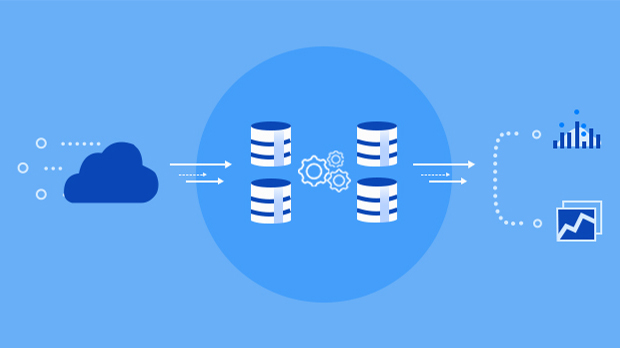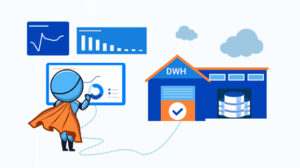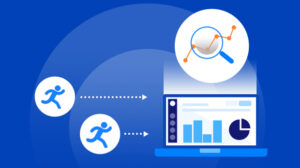If you are running a homegrown ETL setup or haven’t taken a fresh look at your ETL tools in the last few years, it may be worthwhile to look at how you can simplify your data pipeline by switching to a modern, cloud-based Automated ELT tool like Daton. Tired of dealing with slow and out-of-date ETL tools? Do you want to streamline your data flow so you can focus on data analysis? Then it’s time to think about replacing your legacy ETL tools with a new cloud data pipeline.
While ETL (Extract, process, Load) tools have been around since the 1970s, they are no longer the most effective way to move and process data. With the rise of cloud computing, many businesses may now leverage big data without investing heavily in IT infrastructure. As a result, the popularity of cloud-based ETL pipeline products, which provide enterprises with an alternative to traditional enterprise software, has grown.
Let us start by asking a few questions
- How old is your in-house ETL tool?
- Did your legacy ETL solution start with one or two systems and over time, slowly grow bigger?
- What is the coverage percentage offered by your in-house pipeline solution? I.e., are there applications that the business is asking for but you have not covered yet?
- How many developers do you have to build your legacy ETL solution?
- How many developers do you have to maintain your legacy ETL tools?
- Is it a full-time job for them, or is a good portion of their time going into this activity?
- Are your developers keeping with the API changes manually?
- Do you feel at times that your systems are not scaling?
- Are small changes requested by the business taking too long to be delivered?
- Is it becoming difficult for your team to deliver on the SLAs promised to the business due to shortcomings in your legacy ETL tools?
- Is your business asking for more flexibility when it comes to the frequency of data they have available for visualization?
- Are you experiencing a churn or a change in resources, making it harder to support the legacy ETL tools?
- Are your legacy ETL tools finding it hard to keep up with the changing ecosystem of applications used by your marketing teams?
Cons of Legacy ETL Tools
Legacy ETL tools are frequently slow, cumbersome, and necessitate a great deal of manual intervention. They are also costly to maintain and improve, and scaling can be problematic. Furthermore, outdated ETL technologies frequently require specialised skills to operate, limiting the amount of employees who can use them.
Another disadvantage of legacy ETL solutions is that they are not built to handle the volume and diversity of data generated by modern enterprises. Legacy ETL systems were built for structured data, but today’s enterprises create a large amount of unstructured data from sources such as social media, IoT devices, and mobile apps. Legacy ETL tools struggle with unstructured data, which can lead to data quality issues and sluggish processing.
Advantages of a Modern Cloud Data Pipeline
A modern cloud data pipeline has various advantages over traditional ETL solutions. First and foremost, a contemporary cloud data pipeline is more efficient and faster than legacy ETL solutions. It can handle massive amounts of data and scale up and down as required. Furthermore, unlike legacy ETL tools, a modern cloud data pipeline is built to manage both structured and unstructured data.
Another advantage of current cloud data pipelines is that they are simpler to use than legacy ETL solutions. Modern cloud data pipeline applications frequently have a user-friendly interface that enables non-technical users to interact with the data pipeline. This means that more individuals in your organisation will be able to interact with the data flow, leading to faster insights and improved decision-making.
Finally, a modern cloud data pipeline is frequently less expensive than traditional ETL solutions. You only pay for what you need using a contemporary cloud data pipeline, which can save you money on infrastructure costs.
How to Make the Switch from Legacy ETL Tools to a Modern Cloud Data Pipeline
It may appear difficult to transition from legacy ETL tools to a modern cloud data pipeline, but it does not have to be. Here are some things you can do to make the move easier:
- Examine your existing data pipeline: Examine your present data pipeline and find any bottlenecks. What exactly are the bottlenecks? Where are the problems with data quality? What are the expenses of keeping the current data pipeline operational?
- Selecting a modern cloud data pipeline tool: Investigate modern cloud data pipeline products and select one that matches your requirements. Look for a tool that is expandable, adaptable, and simple to use.
- Migrate your data: After you’ve decided on a modern cloud data pipeline solution, you’ll need to migrate your data. This can be a complicated procedure, so having a plan in place is essential. Before moving all of your data, start by migrating tiny quantities of data and evaluating the new data pipeline.
- Prepare your team: Ensure that your staff is well-versed in the new data pipeline technology. This will ensure that everyone is on the same page and can properly use the new tool.
- Keep an eye on and optimise: After migrating your data to the new data pipeline, it is critical to monitor and optimise the pipeline. Look for ways to improve performance while lowering costs.
Examples of Legacy ETL Tools
Data warehousing is an age-old concept. However, it is going through a resurgence thanks to the tremendous progress made in public cloud technologies that turned a slow-moving, saturated market into one of the hottest technology segments in the world at the moment.
Data warehousing and ETL tools go hand in hand. ETL tools provide the mechanism to move data from different data sources into a central data warehouse. They offer the capability to extract data from databases, files, and other applications, transform the data into a middle layer and load the transformed data into a data warehouse. One would often find Oracle, SQL Server, MySQL, or Teradata as the preferred choice of data warehouse in companies that have already adopted data warehousing and Informatica, Pentaho, Oracle Data Integrator, SSIS, or Talend as the choice of ETL tool to move data.
This traditional setup typically involved the purchase of expensive hardware, and hiring of expensive resources to install, set up, and maintain the database as well as the ETL tools and often took months or years before businesses could realize the value of the investment.
Legacy ETL tools vs Automated ELT Pipeline
In contrast to the legacy ETL tools, an automated ETL or data pipeline involves no hardware procurement, installation, maintenance, and upkeep. ELT Tools take advantage of the incredible progress made in cloud data warehousing technologies and push the transformation layer down to the data warehouse where the engine is optimized to perform data manipulations at scale. Daton is a fully managed, cloud-based, no-code SaaS data replication product. Daton is purpose to build a cloud data pipeline to support growing businesses in the cloud data warehousing initiatives to have access to enterprise technology at a fraction of the cost.
If the questions above resonate with you, then it is time to reconsider simplifying your architecture with Daton. What may have seemed to you like an intimidating transition away from your legacy system will start looking much easier once you start using Daton. Sign up for a free trial of Daton today and try out one of our integrations













